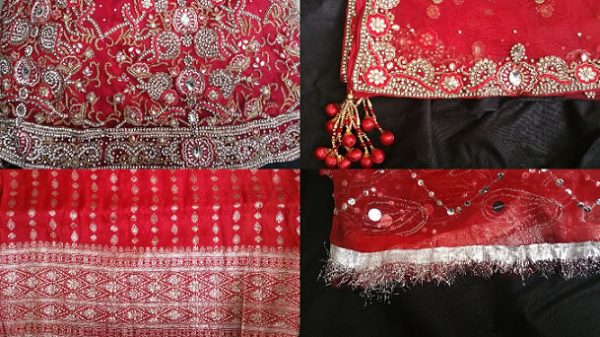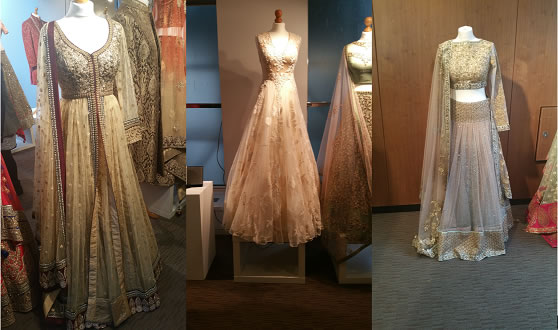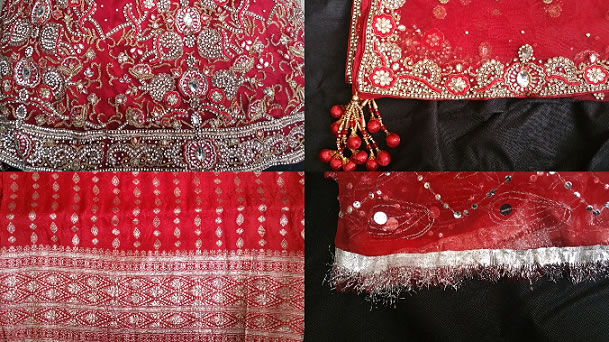Adiba Khatun looks at the evolving tradition of South Asian bridal dresses.

I’m looking at every aspect of South Asian weddings. In this article, I turn my attention to a key component in every successful wedding – the bride’s dress.
The South Asian wedding dress is a sight to behold. With bright and vibrant designs, it’s easy to tell the bride apart from the guests, no matter how glamorous they are.
Starting with the basics, a traditional bridal dress comes in a stunning shade of red. Very different to the typical white dresses of Western culture. But why is red such an important colour for the South Asian bride? According to the owner of a saree store in London, red is important largely because it is NOT a colour people would wear on a regular basis. ‘The red is just traditional, isn’t it? It’s the only occasion where you could wear red and get away with it.’
This shop owner went on to suggest that the days of wearing red to get married are numbered. ‘People are more open to other colours,’ she reported. ‘The navy velvet, that’s a popular choice these days… shades of orange are quite popular as well.’
Traditional for Western brides, the colour white actually symbolises death and mourning in South Asian culture. Widows and widowers often wear white after the loss of their partner. However, even this tradition seems to be diminishing slowly, with contemporary South Asian designers now starting to use white as a primary colour in bridal clothing designs.

The shape of bridal wear is also changing. The authentically traditional dress type would be a saree but as of the past decade, the lengha has become much more popular. A lengha is typically a two piece outfit consisting of a skirt from the waist down and a sleeved top.
This combination is also often accompanied by an intricately decorated scarf which is usually placed on the bride’s head. This three piece outfit differs greatly from the saree, which is comprised of a single piece of rectangular fabric, up to eight meters long.
Though sarees are becoming less popular as bridal wear, the actual saree itself has remained a staple fashion statement amongst South Asians. Sarees are notorious for being incredibly hard to wear and take a significant time just to prepare.
After being wrapped around the waist several times, a pleat is created and secured into the fabric. The next step is to drag the remaining fabric over your shoulders and let it hang fashionably, although hanging the final piece over your head is also acceptable.
It might sound simple enough. But it’s much more mysterious than it sounds. Try it and you’ll see!
A quarter of a century ago Mrs Khanom, previously featured in Rising East, wore a simple red saree on her wedding day. But Mrs Khanom did keep up with the fashion of the time by having her saree lined with tinsel.
Mrs Khanom’s wedding dress cost her ‘only £300’. Quite different to current prices which start at £1200 – the absolute minimum for a single dress. But it’s not all down to inflation. The hike in price also reflects advances in the detail and delicacy of today’s dresses which have progressed from what is now considered simple thread work to complex jewel embellishments.
Mrs Begum, who got married three years ago, wore a slightly less traditional dress. Still donning the bridal red, instead of wearing a saree, she decided to go for the lengha. Her dress cost £1500 – still on the cheaper side of what is now available.
Traditional or not, saree or lengha, the wedding just won’t be special without that perfect dress.

